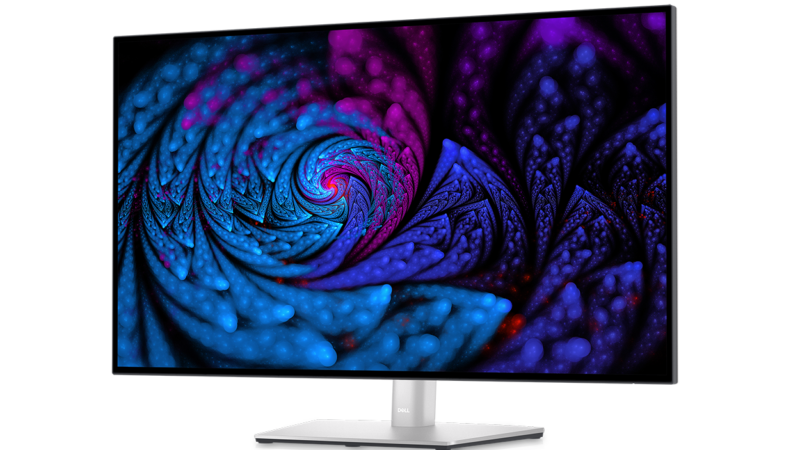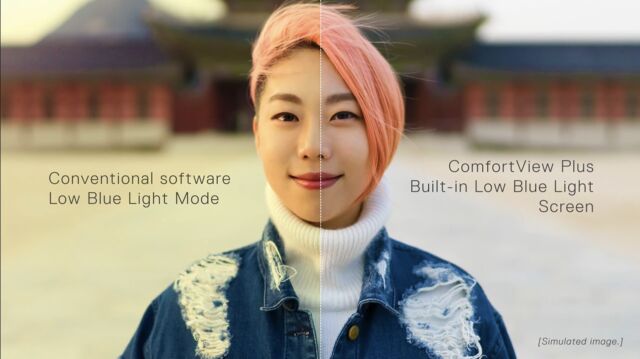
Dell
Dell announced two new models in its popular UltraSharp monitor line on Thursday. The screens are a favorite of office workers, creatives and – because of their USB-C connectivity – Mac users. Now, LG Display is introducing what it calls “IPS Black,” which will come to Dell’s lineup in the UltraSharp 32 (U3223QE) and 27 (U2723QE) 4K USB-C Hub Monitors.
What is IPS Black and can we expect it to give monitors a leg up on the competition?
First, what is IPS?
To understand IPS Black, a new type of IPS panel, it helps to have a basic understanding of IPS or in-plane switching. IPS is one of three types of LED panels in PC monitors and TVs, in addition to VA (vertical alignment) and TN (twisted nematic).
The three technologies work a little differently, resulting in different advantages and disadvantages. IPS panels have better viewing angles, meaning it’s easier to see the image on the screen if you look at it from a side angle. They are also known for their exceptional color rendering, especially when compared to TN panels.
Simply put, IPS panels have liquid crystals aligned parallel to the glass surfaces they enclose. When an electrical charge is applied, the crystals rotate; they maintain a parallel position, but allow light to pass through and create an image. The technology is different from the liquid crystals in a TN panel, which rotate up to 90 degrees to allow light to pass through. TN panels have historically maintained faster refresh rates and response times, but we’re seeing IPS catching up on expensive gaming monitors.
IPS screens also differ from VA panels, which deliver better contrast ratios. VA panels have liquid crystals that are perpendicular to the glass substrates and tilt to allow light to pass through. As noted by monitor company ViewSonic, this makes them better at blocking out unnecessary backlighting, resulting in deeper blacks and higher contrast ratios.
So what is IPS Black?
Just as QD-OLED promises to bring better performance to OLED displays, IPS Black is a new type of IPS that claims to provide better contrast than standard IPS monitors can produce.
LG Display announced IPS Black in January, but hasn’t shared much information about how the technology works. At the time, LG Display said the panels have a black level that is “35 percent deeper than existing IPS products,” and it promised the displays would perform.”extreme brightness and precise color accuracy.”
The U3223QE and U2723QE UltraSharp monitors are the first IPS Black monitors available. Dell says the screens have a contrast ratio of 2,000:1, meaning a black image will look 2,000 times darker than a white one. That’s twice as much as most IPS monitors offer. In comparison, the UltraSharp 30 U3023E, also announced on Thursday, uses a standard IPS panel and has a contrast ratio of 1,000:1. (All three monitors have been on the list for a while, as reported by sites like Tom’s Hardware, but Dell is making its first formal announcement today.)
Dell
Furthermore, the 31.5-inch and 27-inch IPS Black monitors each claim to cover 98 percent of the DCI-P3 color space and 100 percent of sRGB. By comparison, the 27-inch UltraSharp U2720Q, which has a high contrast ratio for an IPS monitor (1300:1), covers 95 percent of DCI-P3 and 99 percent of sRGB.
LG Display’s IPS Black announcement also said the technology “significantly reduces the level of blue light.” Dell isn’t saying its new UltraSharps have any advantage in combating blue light beyond its hardware-based ComfortView Plus, which the company introduced in 2020.

LG Display also said that IPS Black panels allow for “almost borderless design”. Since the IPS Black-based UltraSharps continue the series’ use of tiny bezels, we’d say it’s right.
Dell won’t be the only company using IPS Black technology. LG Display sells to several companies and LG plans to release its own IPS Black monitors. It is still unknown if IPS Black TVs will be coming.

